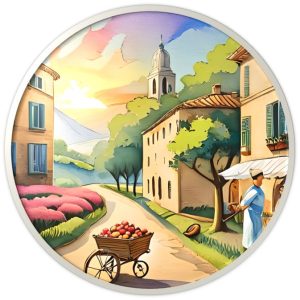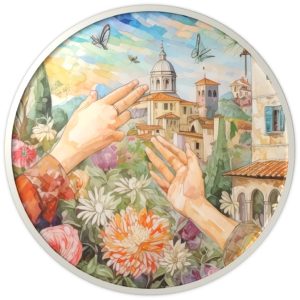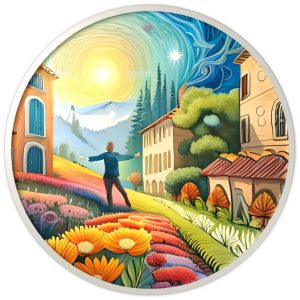Lucio Battisti: catchy melodies or complex and profound stories?
For Meeting Benches art embraces any creative expression. The images created by Dastilige Nevante https://www.youtube.com/channel/UCVE6uDP1y7H1wpuQWL8GFKQ are also designed to stimulate the imagination. As a place where people unite through a passion for art, catering to a global community Meeting Benches attracts artists and art lovers from around the world, inviting them to sit and immerse themselves in the allure of creativity without racial boundaries, religion or gender. If you want to know about the international music scene, you can type https://meetingbenches.net/category/musica/.
“I Giardini di Marzo” https://www.youtube.com/watch?v=tID5AHSmto8 is an iconic song by Italian singer-songwriter Lucio Battisti, written in collaboration with lyricist Mogol. I will try to reconstruct a summary of its content and meaning for you. The song talks about memories and personal reflections, mixing everyday images such as the passage of a cart selling ice cream with deeper and more melancholic thoughts. The text explores themes such as time, love and finding the courage to live fully. The narrative of “The Gardens of March” takes place during the month of March, a period of renewal symbolized by the gardens that take on new colors and by young women who experience new loves.
 Self-taught on the guitar, Lucio Battisti https://italymadeeasy.com/lucio_battisti/ made his debut as a musician in the 1960s. His collaboration with the lyricist Mogol marked a turning point in his career. During his travels abroad, Battisti absorbed influences from blues, soul and the music of artists such as Bob Dylan, The Beatles, The Rolling Stones, The Animals and Jimi Hendrix. His innovative fusion between Anglo-American musical genres and the tradition of Italian song made him a point of reference in the country’s pop music. He released 18 studio albums between 1969 and 1994. His distinctive voice and ability to convey emotion contributed to his success. Starting in the mid-1970s, Battisti gradually withdrew from public visibility. The poetic nature of what he sang left an indelible mark on Italian musical culture.
Self-taught on the guitar, Lucio Battisti https://italymadeeasy.com/lucio_battisti/ made his debut as a musician in the 1960s. His collaboration with the lyricist Mogol marked a turning point in his career. During his travels abroad, Battisti absorbed influences from blues, soul and the music of artists such as Bob Dylan, The Beatles, The Rolling Stones, The Animals and Jimi Hendrix. His innovative fusion between Anglo-American musical genres and the tradition of Italian song made him a point of reference in the country’s pop music. He released 18 studio albums between 1969 and 1994. His distinctive voice and ability to convey emotion contributed to his success. Starting in the mid-1970s, Battisti gradually withdrew from public visibility. The poetic nature of what he sang left an indelible mark on Italian musical culture.
 MARCH’S GARDENS – The cart passed by and that man shouted “Ice cream!” On the twenty-first of the month our money was already finished. I thought about my mother and saw her clothes again; the most beautiful was black, with the flowers not yet withered. After school, the kids sold their books. I stood watching them, trying to find the courage to imitate them. Then, defeated, I went back to playing with my mind and its worms. And in the evening on the phone, you asked me: “Why don’t you talk?” What year is it? What day is it? This is the time to live with you. My hands, as you can see, no longer tremble. And I have in my soul, at the bottom of my soul, immense skies and immense love. And then again, again love, love for you. Blue rivers and hills and prairies where my melancholy runs sweetly. The universe finds space inside me, but the courage to live isn’t there yet. The gardens in March are dressed in new colors. And young women experience new loves in that month. You were walking beside me and suddenly you said: “You’re dying.” If you help me, I’m sure I’ll get out of this! But not a word clarified my thoughts. I continued walking, leaving you yesterday’s actress. What year is it? What day is it? This is the time to live with you. My hands, as you can see, no longer tremble. And I have it in my soul, at the bottom of my soul. Immense skies and immense love. And then again, again love, love for you. Blue rivers and hills and prairies. Where my melancholy runs sweetly. The universe finds space inside me, but the courage to live isn’t there yet.
MARCH’S GARDENS – The cart passed by and that man shouted “Ice cream!” On the twenty-first of the month our money was already finished. I thought about my mother and saw her clothes again; the most beautiful was black, with the flowers not yet withered. After school, the kids sold their books. I stood watching them, trying to find the courage to imitate them. Then, defeated, I went back to playing with my mind and its worms. And in the evening on the phone, you asked me: “Why don’t you talk?” What year is it? What day is it? This is the time to live with you. My hands, as you can see, no longer tremble. And I have in my soul, at the bottom of my soul, immense skies and immense love. And then again, again love, love for you. Blue rivers and hills and prairies where my melancholy runs sweetly. The universe finds space inside me, but the courage to live isn’t there yet. The gardens in March are dressed in new colors. And young women experience new loves in that month. You were walking beside me and suddenly you said: “You’re dying.” If you help me, I’m sure I’ll get out of this! But not a word clarified my thoughts. I continued walking, leaving you yesterday’s actress. What year is it? What day is it? This is the time to live with you. My hands, as you can see, no longer tremble. And I have it in my soul, at the bottom of my soul. Immense skies and immense love. And then again, again love, love for you. Blue rivers and hills and prairies. Where my melancholy runs sweetly. The universe finds space inside me, but the courage to live isn’t there yet.
 “I Giardini di Marzo”, an autobiographical song by Lucio Battisti that reflects on his life in the spring of his youth, deserves an analysis of the meaning hidden in the words. In the opening scene, which represents the sadness and lack of confidence that often afflict people when they are young and uncertain about the future, the song begins with the narrator as a child, listening to the ice cream man and dreaming of his mother. However, he wonders why he doesn’t have the courage to stand up and change his situation. In the chorus, creating a bridge between Earth and Sky, the narrator expresses a sense of wonder at the beauty of the world around him. This immense love also extends to the special person in his life. However, there is a question: will he ever be able to find the courage to live fully and experience all that life has to offer?
“I Giardini di Marzo”, an autobiographical song by Lucio Battisti that reflects on his life in the spring of his youth, deserves an analysis of the meaning hidden in the words. In the opening scene, which represents the sadness and lack of confidence that often afflict people when they are young and uncertain about the future, the song begins with the narrator as a child, listening to the ice cream man and dreaming of his mother. However, he wonders why he doesn’t have the courage to stand up and change his situation. In the chorus, creating a bridge between Earth and Sky, the narrator expresses a sense of wonder at the beauty of the world around him. This immense love also extends to the special person in his life. However, there is a question: will he ever be able to find the courage to live fully and experience all that life has to offer?
 In the second verse, the narrator-Lucio Battisti is now an adult and speaks with a woman-mentor who urges him to make a change. Despite his growing naivety, the narrator fails to take that step, remaining trapped in fear of him. The song reminds us that within each of us there is the potential for love, beauty and the courage to make a difference. Sometimes, however, it takes time to recognize this potential and have the courage to really change things. In summary, “I Giardini di Marzo” is a hymn to beauty, love and the possibility of finding the courage to live fully. The song invites us to grasp the essence of life and overcome our fears to embrace the world with courage and passion.
In the second verse, the narrator-Lucio Battisti is now an adult and speaks with a woman-mentor who urges him to make a change. Despite his growing naivety, the narrator fails to take that step, remaining trapped in fear of him. The song reminds us that within each of us there is the potential for love, beauty and the courage to make a difference. Sometimes, however, it takes time to recognize this potential and have the courage to really change things. In summary, “I Giardini di Marzo” is a hymn to beauty, love and the possibility of finding the courage to live fully. The song invites us to grasp the essence of life and overcome our fears to embrace the world with courage and passion.
 Meeting Benches World art in all forms
Meeting Benches World art in all forms







